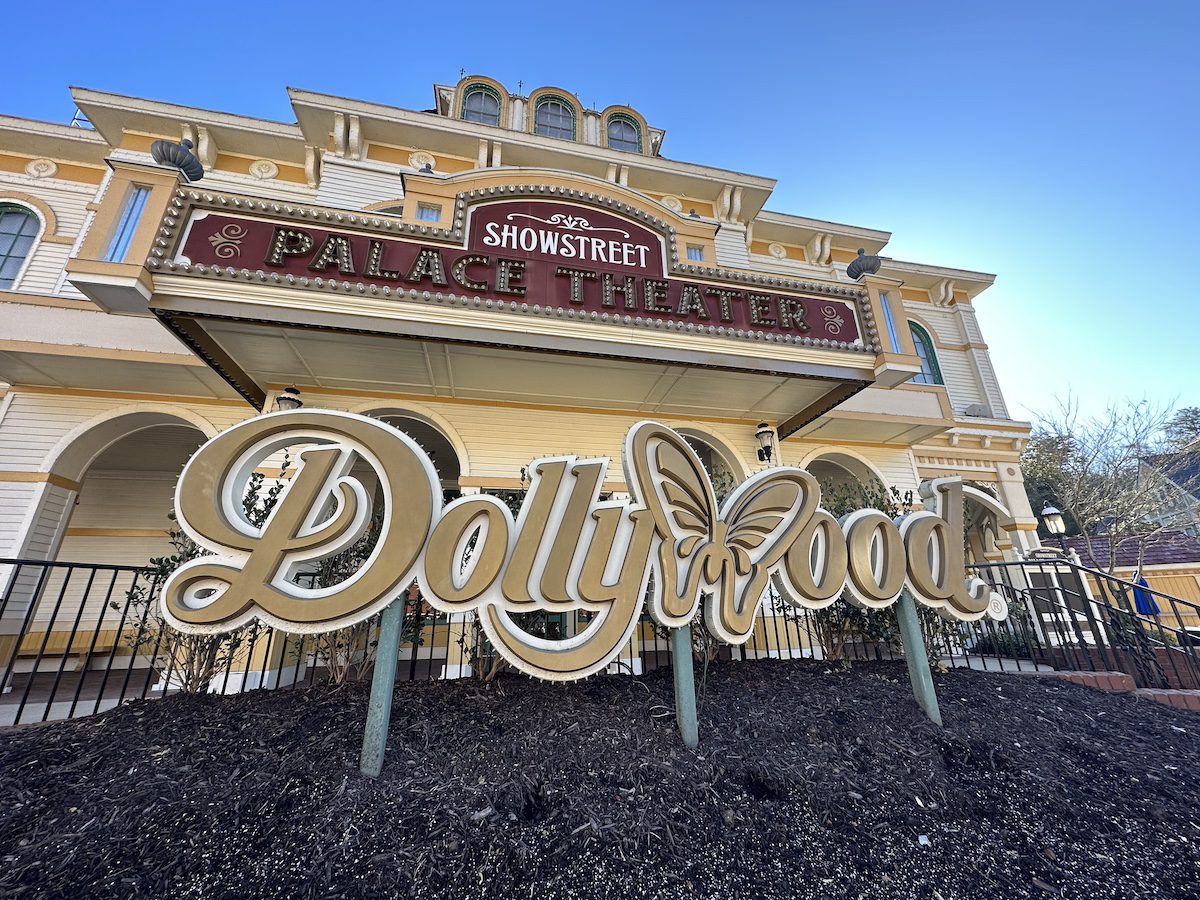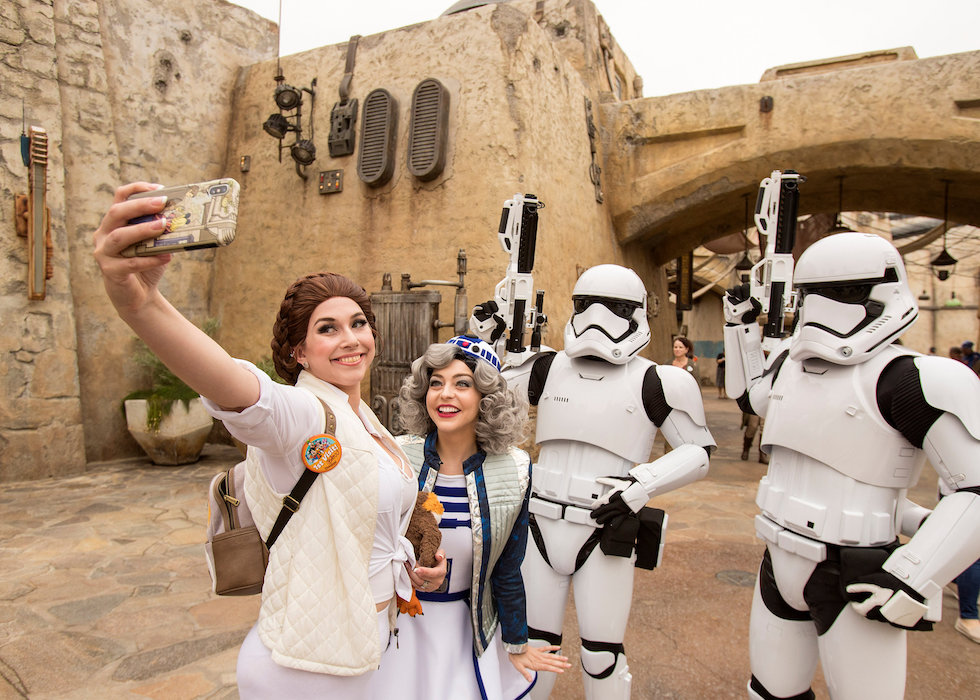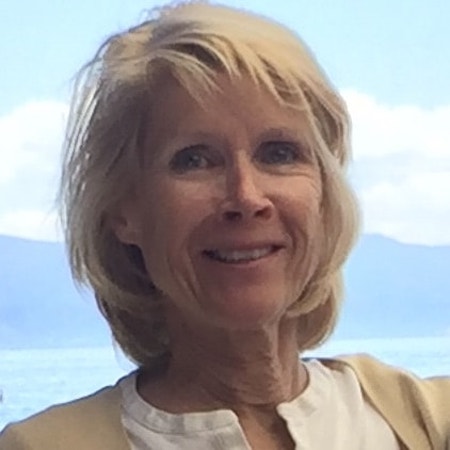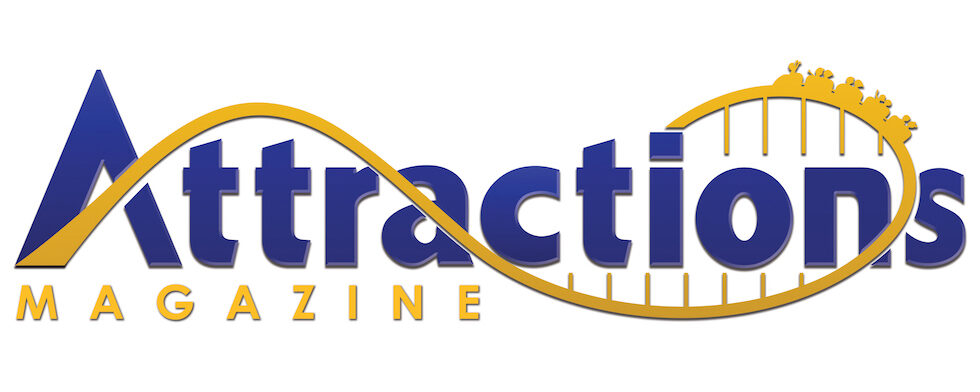Attractions Expert Q&A: Margaret Chandra Kerrison played an integral role in developing the award-winning Star Wars: Galaxy’s Edge
Margaret Chandra Kerrison is a Senior Creative Director for TAIT , which delivers cutting-edge technology, precision engineering, and creative design for live entertainment, location-based experiences, brand experiences, and placemaking around the globe.

Throughout her 17-year career, Margaret Chandra Kerrison has been a key contributor to six Thea Award-winning teams. She started at BRC Imagination Arts, working on high-profile projects like the NASA Kennedy Space Center Visitor Complex and the Information and Communications Pavilion at the 2010 Shanghai World Expo. Margaret then joined Walt Disney Imagineering as a show writer and later as managing story editor, where she played an integral role in developing the award-winning Star Wars: Galaxy’s Edge. She went on to serve as writer and story lead for projects across Marvel, Star Wars, and National Geographic.
At TAIT, Margaret guides the creative process from ideation through execution, ensuring innovative solutions and exceptional quality across all projects.
What theme park have you always wanted to visit but have never been to?
I’d love to visit Dollywood—I’ve never been, and I’m curious to see what it’s all about. I’ve also never been to Tokyo DisneySea, but I’m heading there this summer on a family trip to Japan, and it’s definitely one I’m excited to check out.

Another place on my list is Efteling in the Netherlands—I’ve heard so much about it, and it’s a place I’ve wanted to experience for a while. So, those are my top three destinations for now. Of course, there are more, but these are at the top of my list.
Was there a theme park or attraction that inspired you to pursue this industry, and how did it influence you?
When I was eight, I visited Tokyo Disneyland, and the Haunted Mansion ride left a lasting impression on me. As a kid, I had a vivid imagination—I loved writing stories, creating finger puppets, and building dioramas—and the immersive experience of the Haunted Mansion felt like stepping into one of my fantasies. It had just the right amount of creepy magic without going into full-on horror, and even though I didn’t speak Japanese, I felt like I was walking through a haunted house and safely encountering ghosts.

That experience had a huge impact on me, and it’s still my favorite ride to this day. The dark, moody atmosphere continues to amaze me, and I never get bored of it—it’s fun and a little scary, but you always know you’re safe at the end. Growing up in Singapore, I didn’t have many opportunities to visit theme parks regularly, but after moving to the U.S. and being closer to places like Disneyland, Universal Studios, and Six Flags, I began to immerse myself more in the industry. Haunted Mansion was the spark that ignited my passion for theme park experiences.
Was there a ride, attraction, or character that frightened you as a child?
Haw Par Villa in Singapore was unlike anything else—it’s an outdoor park filled with statues and massive dioramas depicting Chinese folklore, legends, and religious scenes from Taoism, Buddhism, and Confucianism.

In the 1980s, it was a major local attraction, but some scenes were graphic, especially those depicting hellish punishments. Those images stuck with me. I still remember them vividly today.
What was the oddest or coolest job you’ve had in your career?
My oddest job was working on “The X Factor” for one season as an entertainment journalist. I was running around the CBS Studios lot, chasing after people like Simon Cowell and Kelly Clarkson to interview them and write articles. We were interviewing contestants, judges, and celebrities, and we had to make it work no matter what. After that experience, I gained a huge respect for journalists! I honestly couldn’t keep up with that lifestyle—just churning out article after article. I was writing three to four pieces a week, and it was incredibly intense. I wanted to quit about 30 times, but I learned so much. It really gave me a taste of the TV industry and taught me how to be a professional and a team player. One of the highlights was interviewing Paula Abdul every week since she was one of the judges. And Simon Cowell? He’s surprisingly charming.
As for the coolest job, hands down, it has to be as an Imagineer. I didn’t even know such a job existed until my 20s. I thought I had to be a screenwriter for TV or film, but here was a role where I could use my writing and storytelling skills to help build theme parks all over the world. That was a dream job come true. I’ve made lifelong friends from working at Disney.
I moved to LA to attend USC for my MFA in screenwriting, thinking I’d pursue a career in film or TV. But while I was there, I discovered themed entertainment. My second job out of USC was with BRC Imagination Arts, where I worked as a consultant for five years. I loved it. I fell in love with the industry and never looked back.
While consulting, I applied for a writer position at Disney but didn’t get the job. This is one of those inspiring moments for anyone: when one door closes, another one opens. During the interview, the two people I met with said they liked me but needed someone with more experience—at the time, I had seven years under my belt, and they wanted someone with 15. But they offered me a consultant role instead, and I took it. That led to meeting an executive producer who was looking for a writer on a secret project. That project turned out to be Star Wars: Galaxy’s Edge. I was fortunate enough to be there from the very beginning, seeing all the iterations of the land as it evolved. I spent five years building it, all the way through the opening. Then, I stayed at Imagineering for two more years, working on other exciting projects.

It was an amazing experience with a dream team. Looking back, I think about the incredible people in various roles who elevated each other’s work. We all had each other’s backs, helping one another however we could, even if it wasn’t part of our job descriptions. We just made it work because we were all working toward the same goal: building the most epic, ambitious project ever created at Imagineering at the time. And all of us who worked on Galaxy’s Edge are so incredibly proud of what we built.
No matter what job you have, you learn so much—sometimes in ways you never expect. You learn to be a team player, to work hard, and to show up professionally. Absorb everything you can. I believe everyone should approach their work with a beginner’s mindset and a growth mindset. It doesn’t matter how old you are, there’s always something to learn, whether it’s from someone older, younger, or a peer. You never know what you might take away from an experience.
I like learning from different companies because each offers a unique perspective. When I started at BRC, it was mostly brand experience and museum design, which was an incredible foundation. Then, I realized I wanted to dive deeper into theme parks, so I went to Imagineering and had the opportunity to learn from true masters of theme park design. After that, I became fascinated by what Airbnb is doing with experiences, and I took the time to learn from their innovative approach to creating immersive, local experiences. Each of these experiences has shaped how I approach storytelling and design, expanding my understanding of creating memorable, impactful experiences for people.
Now, I’m at TAIT, a leader in live experiences, and I was drawn to their vision of building a dynamic creative powerhouse backed by innovation & technology. We’re expanding across multiple markets—LBE, placemaking, live events, and brand experiences—offering comprehensive, end-to-end client solutions and capabilities. What excites me most is TAIT’s commitment to long-term partnerships rather than one-off projects. We’re invested in lasting collaborations, ensuring meaningful and enduring relationships with our clients.
Learning from different industries, different people, and different disciplines has been so rewarding for me. And every time I learn anything, I want to share it. So, I write books – I just released my third book this month.



I have three books out. The first one is Immersive Storytelling for Real and Imagined Worlds (2022). The second one is Reimagined Worlds: Narrative Placemaking for People, Play, and Purpose (2024). That’s more about placemaking for public places, not just theme parks. And then the third one just came out a few weeks ago, and it’s called The Art of Immersive Storytelling: Strategies from the Gaming World (2025). So how we can learn from games in terms of how to make a visitor feel like they have agency, that they have a chance to take action and see consequences based on their actions and to go on their own hero’s journey, among other lessons that they can take away from gaming.
What ride or attraction do you think everyone needs to experience and why?
Star Wars: Rise of the Resistance, without a doubt. It’s truly epic because it’s a journey—a multi-act adventure. It’s not just one ride system; it’s a complete hero’s journey, your personal hero’s journey. As you move through it, you know you’re becoming part of Star Wars history because the experience is set within the canonical timeline of the saga. Every time you ride, you’re part of that legacy.

As the story lead, I had the privilege and responsibility of collaborating with the incredibly talented teams at Lucasfilm and Imagineering to ensure that we were telling a cohesive, interconnected story. I worked closely with various disciplines to ensure everything aligned perfectly. From the very beginning, we were intentional about creating a living, breathing land within the Star Wars universe—one that felt real and immersive, where every element contributed to the greater narrative.
If you were tasked with creating a new theme park food, what would it be?
I think theme parks need to offer better food—higher quality, locally sourced, and healthier options. Ideally, the food should reflect the location, featuring authentic local cuisine or dishes inspired by the theme of the land. When I visit a park, I don’t just want the standard hot dogs, burgers, and nachos—I want something that represents the space’s culture, community, or storytelling. More variety, better flavors, and thoughtfully curated menus would make the experience even more immersive.

Photo courtesy of Walt Disney World Resort
That’s why I love dining at World Showcase in Epcot—being able to explore different countries through their food and drinks makes it such a special experience.
You’re a walk-around character for a day; who do you choose?
Definitely a Stormtrooper—they’re hilarious! I’d love the chance to be a bit snarky with guests but in a lighthearted, fun way.

What types of attractions would you like to see more of and why?
I’d love to see more interactive ride models that go beyond just blasting or shooting. For me, immersion in a world and story is far more compelling than being pulled out of it by the mechanics of scoring points or figuring out how to interact with the ride. I want to be fully present in the experience rather than distracted by whether the technology is working or if I’m doing it “right.”
Sometimes, low-tech solutions can be just as magical—there’s something special about walking into a space and being free to explore, discover, and engage on my own terms. My family loves escape rooms, but I often wish they offered more than just unlocking locks or solving number combinations that don’t always fit the narrative. I want an evolution of escape rooms where progression feels natural—where moving from scene to scene makes sense within the world, and every interaction is meaningful.
Ultimately, interaction should serve the story. If an action feels disconnected—like solving a random puzzle that has nothing to do with the setting—it takes me out of the experience. I crave something organic and intuitive, where I can choose my own path without the payoff leading to just another media projection room. It all has to make sense.
As designers, we need to be intentional in crafting experiences that leave guests with a clear, emotional takeaway—something that feels transformative and deeply meaningful rather than open to interpretation. The goal should always be to create a journey that resonates long after the experience ends.
Was there any challenge or surprise in your career?
This industry demands adaptability—things evolve quickly, and the most successful people are those who can pivot just as fast. Some of the most talented professionals I’ve worked with are the ones who don’t cling too tightly to their ideas. Truly brilliant minds constantly question themselves, challenge their own perspectives, and stay open to change.
We’re all still learning, and that’s a good thing. It means we’re not locked into a one-size-fits-all solution because every project is different. There’s no universal approach—each design comes with its own unique set of challenges. That’s why a growth mindset is essential. You have to stay curious, ask the right questions, and be comfortable not always having the answers.
Resilience and determination are key. When you don’t have the solution, you find the right people to help you figure it out. At the end of the day, success in this industry comes down to being a great team player, staying adaptable, and embracing every challenge as part of the process.
Can you talk about what you are working on these days?
I’m currently working on theme park projects around the world—but that’s all I can say for now!
Our work spans four key areas: location-based entertainment, which includes theme parks and museums; brand experiences, where we’ve collaborated with companies like Bloomberg, Snapchat, and Nike; live experiences, like concerts, theater, and festivals; and placemaking, which ranges from multi-use developments and corporate spaces to entertainment venues and stadiums. We partner with brands and clients of all sizes to bring these experiences to life.
I love being part of this industry. You meet passionate, like-minded people from all over the world who are just as excited about creating immersive experiences and bringing joy to their communities. The people in this field are incredibly worldly—you’ll hear stories about their time living in Shanghai, hanging out in hidden neighborhoods, or picking up Japanese from their years in Japan. It’s inspiring to be surrounded by such talented, well-traveled individuals who bring a global perspective to their work.
You are going to your favorite theme park; which people (dead or alive) are you taking with you?
Definitely my family—my extended family; all 12 of us—my husband, our eleven-year-old son, my brother, my sister, their spouses, and their children.
Two years ago, we all traveled to Japan, and one of the most incredible experiences we had was visiting teamLab PLANETS in Tokyo. teamLab is an artist collective based in Japan, and this installation is a fully immersive, scene-by-scene journey through digital art. From the moment you enter, you take off your shoes and socks and wade through the water, interacting with digital koi swimming in a pond. It’s breathtaking.

I didn’t give my family any details beforehand. We watched the intro video right before entering, which instructed us to store our shoes, socks, and belongings in lockers. My older brother immediately protested—he was not taking off his shoes and socks and was not going in. But I told everyone to keep an open mind and go with it. And they did. Every single one of them loved it. Out of everything we did during our week in Japan, teamLab ended up being the highlight of the trip for everyone.
It’s not a theme park; it’s an immersive art installation beautifully designed to awaken a sense of wonder. It’s playful yet sophisticated, blending high-tech interactivity with an elegant, artistic experience. You step inside, let go, and just be.
If I could choose anyone dead, it would be Walt Disney himself. I’d love to walk through Disneyland and Epcot with him and see his reaction to how his vision has evolved. Would he be proud? Would he be surprised?

What would he wish had been done differently? More than anything, I’d just want to listen—to hear his insights, his dreams, his unfiltered thoughts. To understand how he saw the world and what he still hoped for. It would be an incredible gift to learn from the very man whose imagination shaped so much of what we create today.

Writer Kendall Wolf is a long-time consultant in the themed entertainment industry. She has worked with designers, producers, and fabricators to help developers create unique and successful projects around the world. In 2017, she introduced Merlin Entertainments to a development group in Sichuan province for the first Legoland park in China. Kendall continues to consult for the developer to open more themed resorts in China.
Follow us:
More Attractions Magazine stories:
No matter where you want to go, our trusted partner MEI-Travel will handle the planning so you can focus on the memories. They offer free vacation-planning services and have nearly 20 years of experience creating memorable vacations. Visit MEI-Travel for a fee-free, no-obligation quote today.

